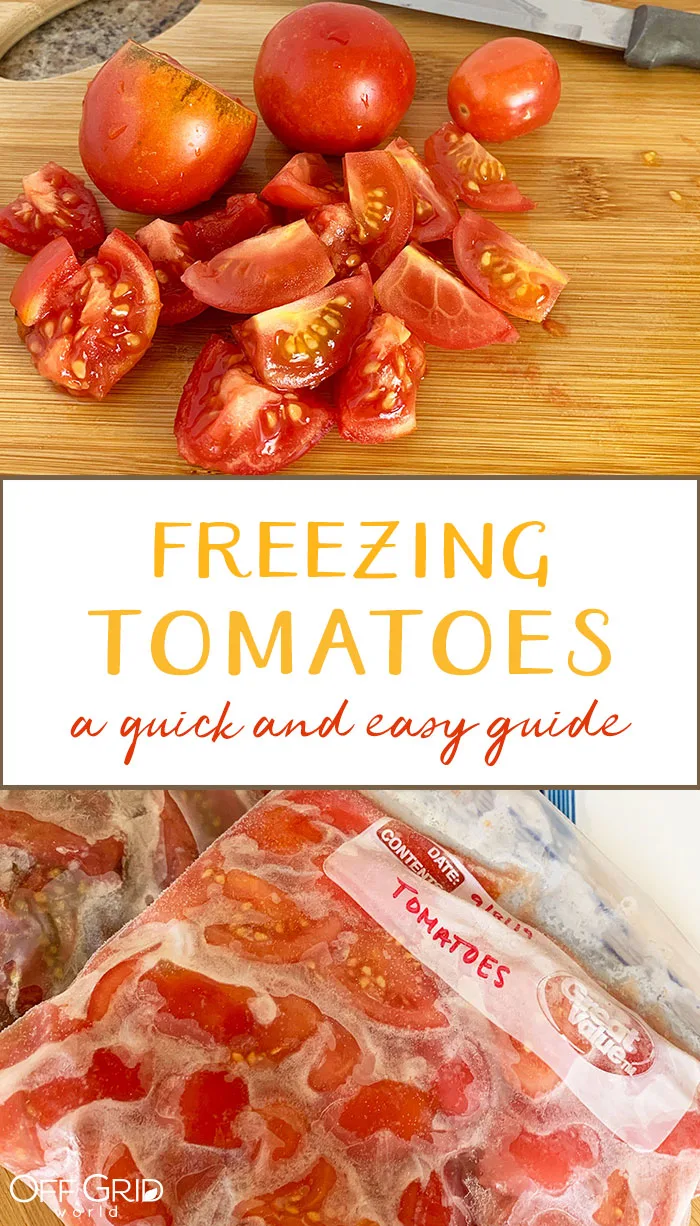Freezing tomatoes is a quick and easy way to preserve your tomato harvest. With simple steps like washing, coring, optionally blanching and peeling, you can pack your tomatoes into freezer-safe containers to enjoy their fresh flavor for up to six months. This method offers a great solution to minimize waste and savor garden-fresh tomatoes all year round.
If you’re like most gardeners, you eagerly anticipate those sunny summer days when your tomato plants are teeming with ripe, juicy fruits. There’s truly nothing like the taste of a garden-fresh tomato.
But what happens when you have an overabundance of this ruby bounty, more than you can use immediately? Today, I’m excited to share the easiest way to preserve your tomato harvest and enjoy their garden-fresh flavor all year round. We’re talking about freezing tomatoes!
When it comes to preserving, canning is amazing, but sometimes having a quicker, easier method to save those garden goodies is nice. Freezing is an easy way to save some of that harvest to use for the rest of the year!
We all love those nice, ripe tomatoes in the summer, but in the middle of winter you’ll thank yourself for taking the time to save some of your garden harvest.
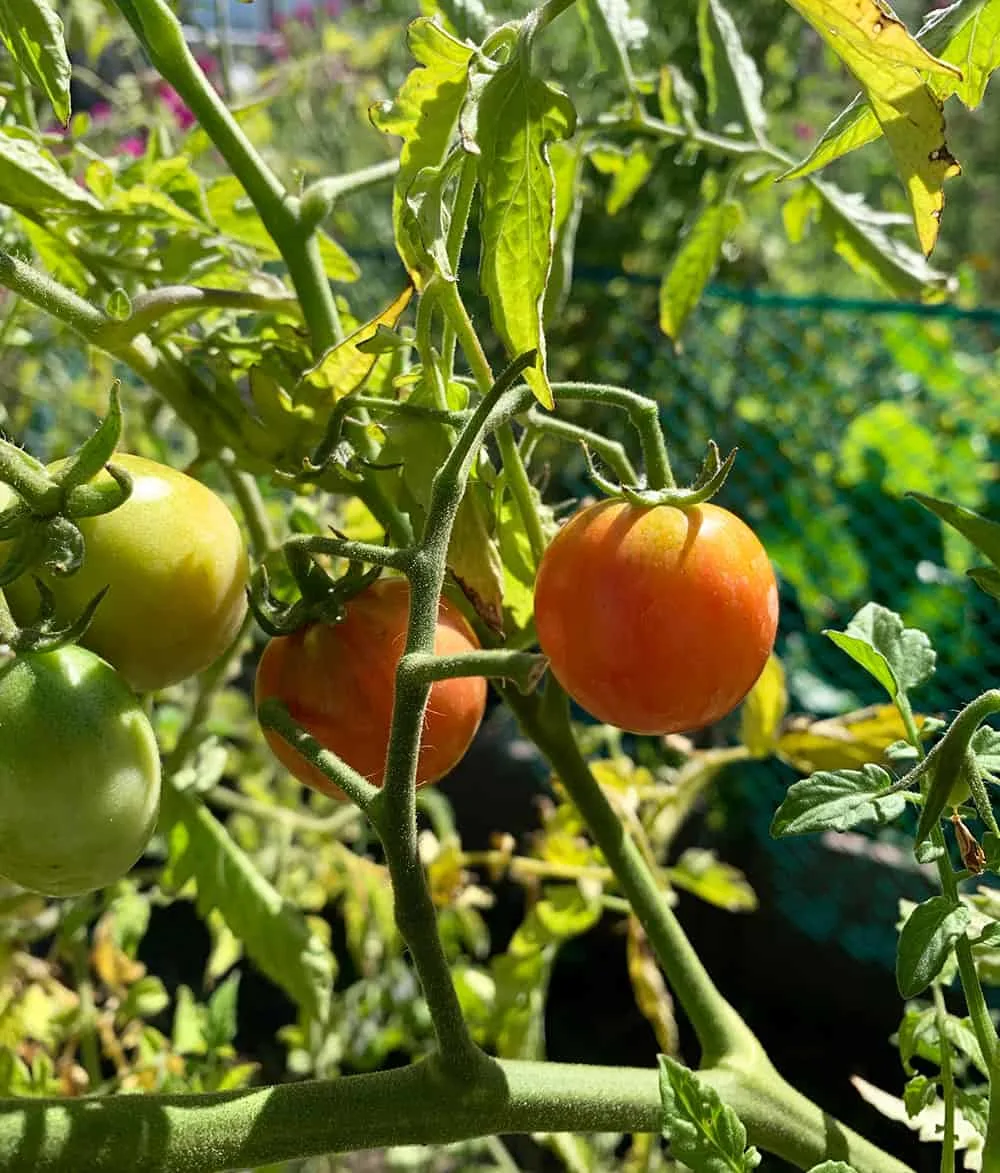
Last year I made several batches of “sun” dried tomatoes, which were amazingly delicious, but quite a bit of work. This year I’m taking advantage of a simpler option by freezing most of my tomatoes – at least whatever is left after my kids get to them! 😉
Tomatoes are one of the easiest plants to preserve by freezing. Like one of my other favorite garden crops – green onions – tomatoes do not require blanching before freezing. They can be frozen completely raw, though we do show the steps below for both options. If you don’t want tomato skins in your final product, blanching makes removing them easy.
How about freezing tomatoes whole? Yes! Most people prefer to chop or puree them first so they’re more convenient to use later, but if you’re in a pinch, you can simply wash them, remove the stem, and toss them into the freezer.
Frozen whole tomatoes are easy to cut up once they slightly thaw (they should still be mostly frozen and firm when you cut them, not mushy), so they’re super easy to add to soups and stews.

I prefer to chop my tomatoes up before freezing because it’s a great way to always have diced tomatoes on hand for winter soups without buying canned tomatoes from the store, but when I’m short on time I don’t hesitate to freeze bags full of whole tomatoes.
Freezing tomatoes is an incredibly straightforward process, and it’s perfect for all varieties of tomatoes. Whether you’re working with plump beefsteaks, sweet cherries, or hearty romas, this method has got you covered.
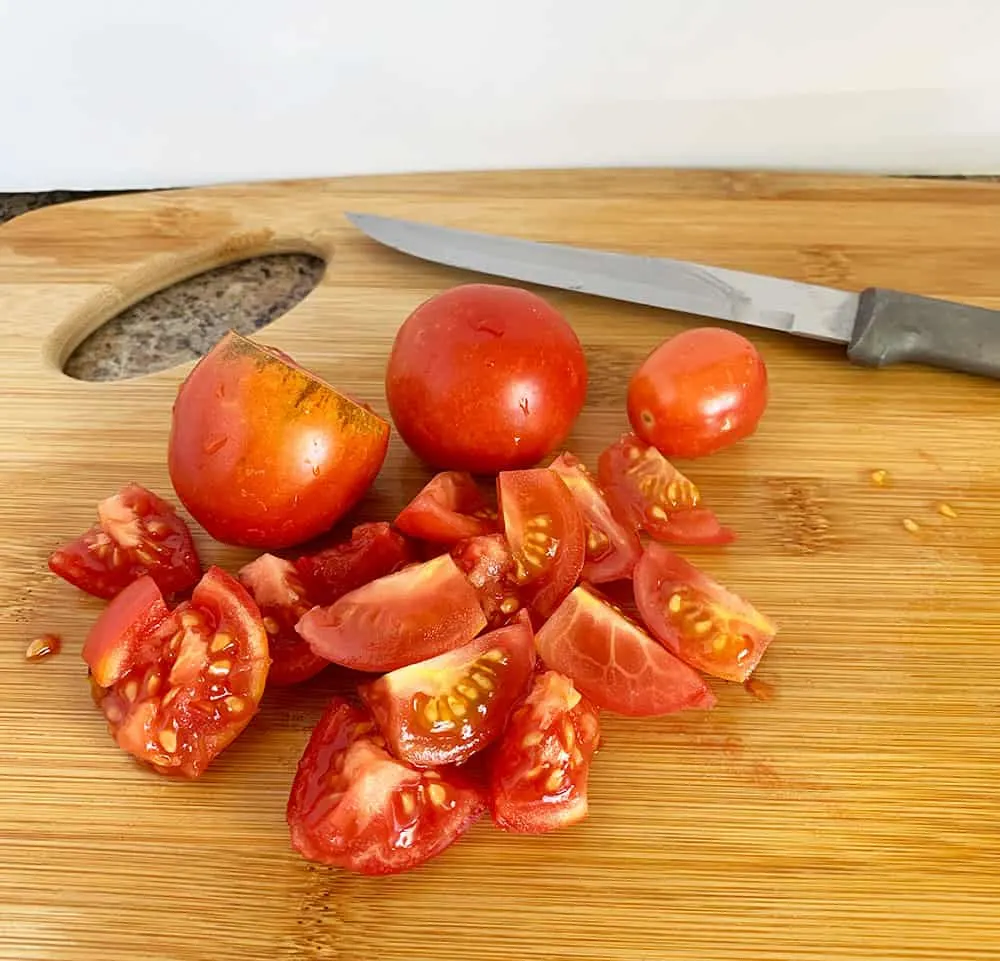
Freezing tomatoes (with blanching)
1. Prepare your tomatoes
First things first, you’ll want to thoroughly rinse your tomatoes to remove any dirt or debris. After that, it’s time to remove the core. For this, I like to use a sharp paring knife and cut a cone-shaped piece from the top of the tomato where the stem was. Don’t forget to remove any blemishes or spots at this point too.
2. Blanching
Blanching is a quick and simple process that loosens the skin, making peeling much easier. To be clear, you do not have to blanch tomatoes. I usually don’t, but it’s a matter of preference.
To blanch, bring a large pot of water to a boil. Then, using a slotted spoon, lower your tomatoes into the boiling water. Leave them in for about 60 seconds or until you start to see the skin split.

3. Cooling Down
Once the skin splits, it’s time to take the tomatoes out. Carefully lift them from the boiling water using your slotted spoon and transfer them immediately into a bowl of ice water. This is known as shocking, and it stops the cooking process. Leave the tomatoes in the cold water for about five minutes or until they are completely cool.
4. Peeling and Seeding (Optional)
After the tomatoes have cooled, the skin should slip off effortlessly. For the full traditional freezing method, you can also cut the tomatoes in half and gently squeeze them to remove the seeds. However, this step is optional, and I sometimes skip it when I’m short on time or want to keep the full texture. Remember, there’s no right or wrong here; it’s all about your personal preference!
5. Packing and Freezing
Now, all you need to do is transfer your tomatoes to freezer-safe bags or airtight containers. Try to remove as much air as possible before sealing to prevent freezer burn.
Finally, label your containers with the date, and voila! Your tomatoes are ready for the freezer, where they can stay fresh for up to six months.
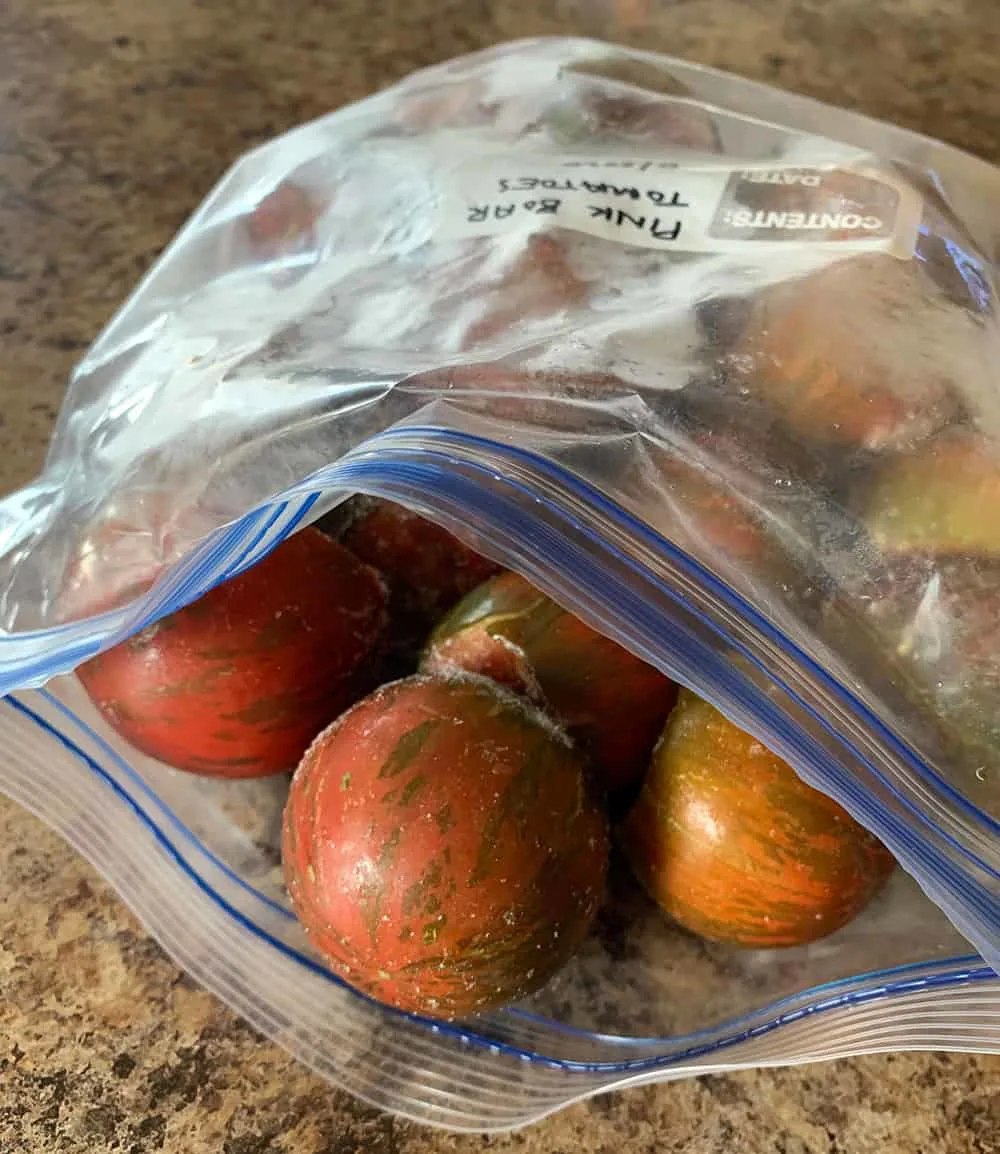
Freezing chopped or whole tomatoes (no blanching)
For those who’d rather skip the blanching step or want to save a bit more time, this one’s for you. Freezing tomatoes whole is usually the best way to handle a large bumper crop for later use.
1. Prepping your tomatoes
Start by washing your tomatoes thoroughly under running water to remove any dirt. Once they’re clean, dry them off with a clean kitchen towel or set them out to dry at room temperature.
For the core, cut a small cone-shaped piece from the top where the stem was using a sharp knife. Also, make sure to discard any part with blemishes or spots. If I am freezing cherry tomatoes, I don’t bother removing the core.
2. Chopping or leaving whole
This step depends on your future use of the tomatoes. If you prefer your tomatoes chopped for convenience in future recipes, slice them as you would normally. If you want them whole, just leave them as they are!
3. Pre-freezing
This step is particularly important when freezing without blanching, especially for chopped tomatoes. Arrange your tomatoes or tomato pieces in a single layer on a baking sheet lined with parchment paper. Make sure they’re not touching each other to prevent them from freezing together. Now, pop the tray into the freezer for a few hours until the tomatoes are frozen solid.
Note: If you are freezing very juicy tomatoes, they’ll turn into a soupy mess on your cookie sheet once you chop them up. For these, you can skip the pre-freezing step and put them straight into a freezer bag.

4. Packing for Long-Term Freezing
Once your tomatoes are pre-frozen, quickly transfer them into freezer-safe bags or containers. A gallon-sized Ziploc bag is great for keeping large quantities of frozen whole tomatoes; just remove a few at a time as you need them.
Since they were pre-frozen, they won’t clump together, allowing you to use as many or as few as you need later. Remove air from the bags before sealing to prevent freezer burn, or use a vacuum sealer to get rid of any air pockets.
5. Labeling and Freezing
Lastly, don’t forget to label your bags or containers with the date before you put them back in the freezer. Your tomatoes will stay good for up to six months, but I’m betting you’ll use them long before that!
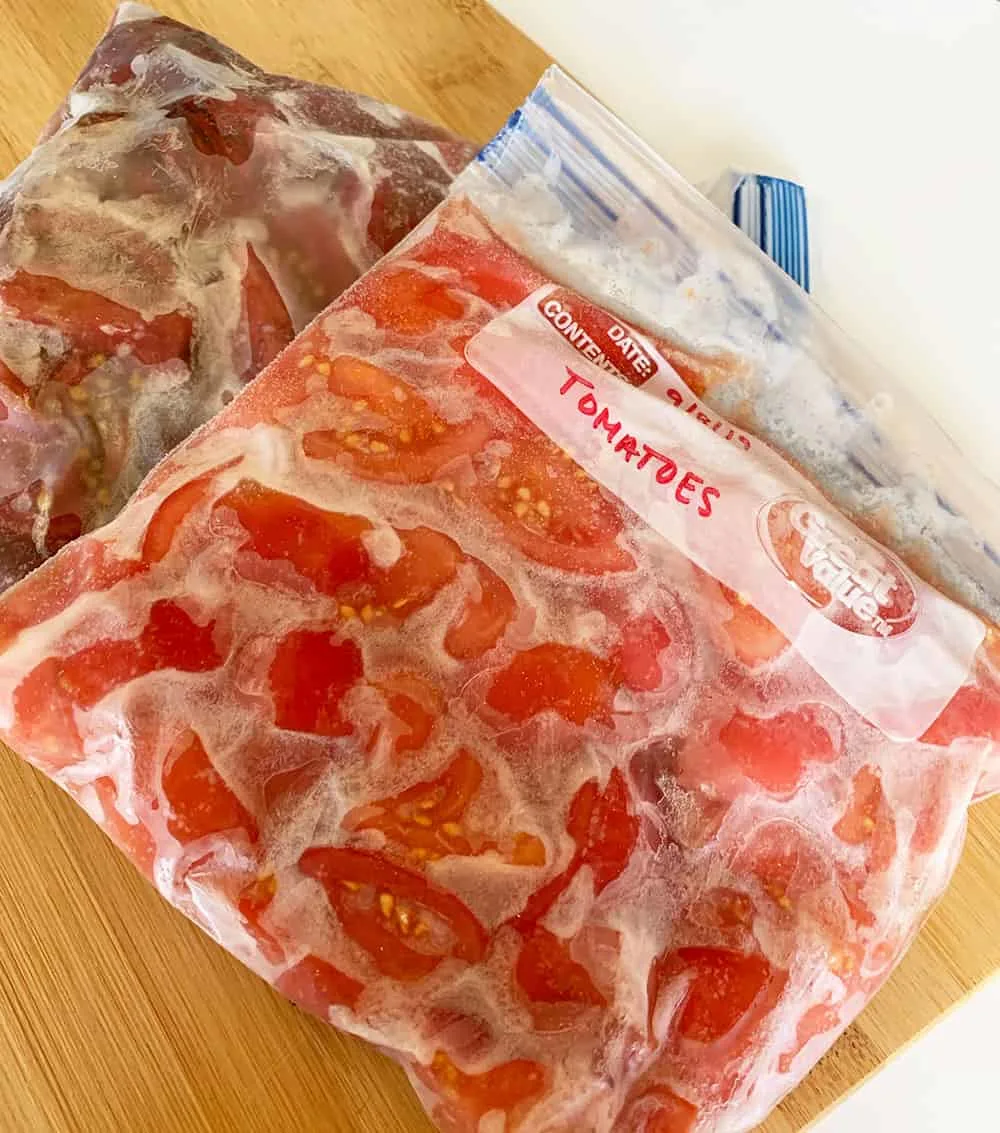
And that’s it! An incredibly straightforward process to preserve your tomatoes without the need for blanching. Just like the blanched frozen tomatoes, these are perfect for adding to stews, soups, sauces, or salsas.
You can also use them to make tomato sauce, spaghetti sauce, and other delicious recipes throughout the year. They might not have the firm texture of fresh tomatoes once thawed, but the flavor will surely transport you back to those sunny summer days full of fresh garden tomatoes.
Of course, canned tomatoes and dried tomatoes are valuable to keep in your winter/survival food stash, especially if you find yourself without power (for the freezer). But freezing is definitely the quickest way to deal with a large number of tomatoes, and they taste pretty darn close to fresh when it comes time to use them.
So, next time tomato season gives you an abundance of fruits all at once, don’t sweat it! Freezing your surplus is a wonderful way to reduce waste and ensure you can enjoy homegrown tomato goodness throughout the colder months.
